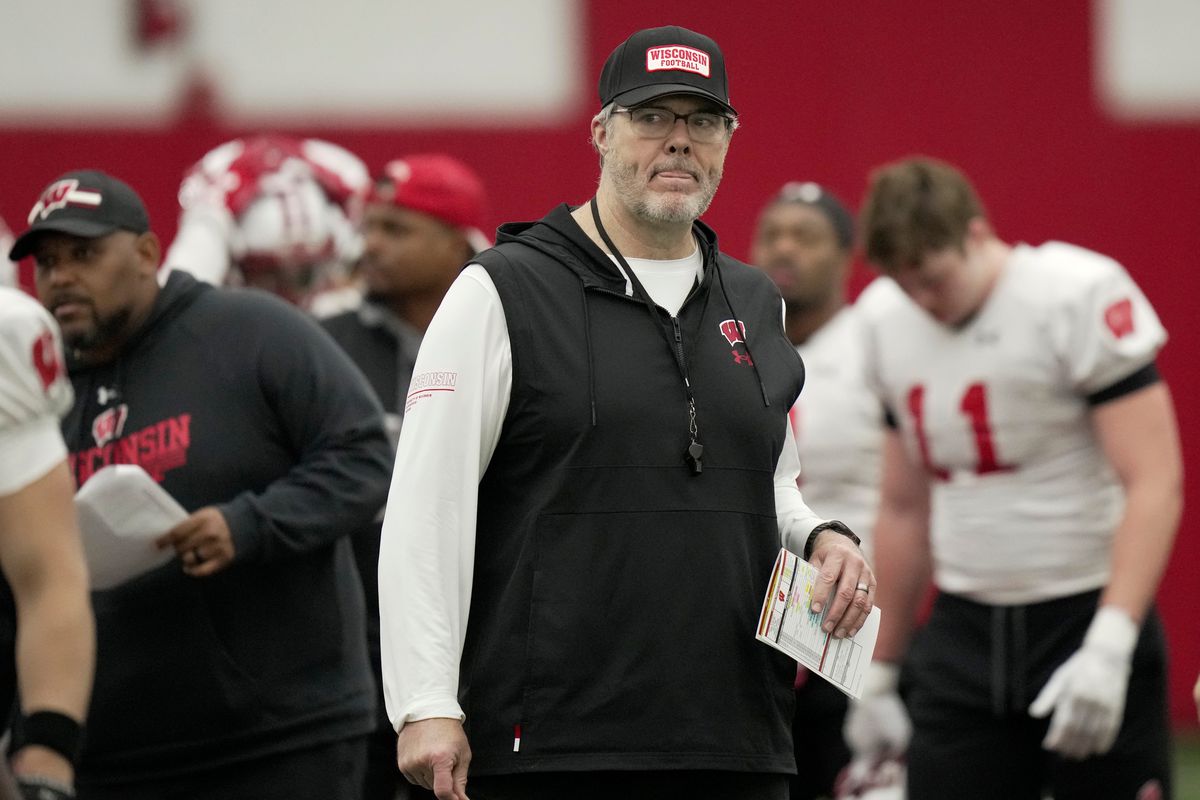In the lead-up to the 2025 college football season, the Wisconsin Badgers find themselves at a critical crossroads. After a whirlwind offseason filled with staff changes, a new offensive coordinator, and a revamped roster, expectations around the program are murky at best. Head coach Luke Fickell, entering his second full year in charge, is tasked with not only steadying the ship but also guiding the Badgers toward exceeding external expectations. However, with a difficult schedule looming and plenty of uncertainty on both sides of the ball, the road ahead will be anything but easy. Still, there’s a path to success—if a few key components fall into place.
The Aftermath of Offensive Experimentation
The most immediate concern centers around the offense. Last season, the Badgers made headlines by bringing in Phil Longo to implement an Air Raid-style attack—an aggressive pivot from Wisconsin’s traditional ground-and-pound identity. Unfortunately, that experiment fizzled quickly. The offense struggled with inconsistency, and the team lacked cohesion and identity. That experience prompted a philosophical course correction this offseason, and now, longtime offensive coordinator Jeff Grimes has been hired to restore stability.
Grimes brings with him a track record of success, most notably at Baylor, where his run-heavy, physical offense helped guide the Bears to a Big 12 title in 2021. His system is fundamentally different from Longo’s: it’s built around a downhill running game, multiple tight ends, play-action, and controlling the line of scrimmage. It’s a blueprint that feels more natural for Wisconsin and its player profile. But can this offense come together fast enough?
The early part of the schedule doesn’t offer much breathing room. In Week 1, the Badgers travel to face Alabama—one of the toughest openers in the country. Just a few weeks later, they host a loaded Washington squad and perennial powerhouse Ohio State. These matchups offer little room for error and will put Grimes’ new-look offense under immense pressure from the get-go.
The key will be the offensive line. If Grimes can get the unit to fire off the ball, win in the trenches, and establish a reliable rushing attack, it could create balance and confidence for the entire team. On the other hand, if early chemistry issues arise and the system looks sluggish, it may result in another season of offensive underachievement. The offensive identity, or lack thereof, will define Wisconsin’s fate in 2025.
The Billy Edwards Jr. Factor
Perhaps no single player will impact Wisconsin’s ceiling more than quarterback Billy Edwards Jr. The former Maryland signal-caller transferred to Madison this offseason and quickly won the starting job. His dual-threat capabilities, leadership presence, and maturity have made a strong impression in spring and summer workouts. Yet, games aren’t won on potential alone.
Edwards enters a challenging situation. Wisconsin’s wide receiver room is young and lacks proven playmakers, while the backfield is filled with fresh faces still trying to carve out roles. In that context, Edwards’ ability to manage the offense becomes vital. He won’t be expected to carry the team on his back, but he must be efficient, protect the football, and provide just enough big-play capability to keep defenses honest.
More importantly, Edwards needs to demonstrate poise in tight moments. With so many new and untested skill players around him, he must be the stabilizing force. His performance could be the difference between Wisconsin barely reaching bowl eligibility and exceeding the low-to-mid-tier expectations currently projected by most analysts.
In a perfect world, Edwards becomes a reliable starter who executes the offense cleanly, delivers in clutch moments, and helps mold the offense into a consistent, clock-controlling machine. While he may not match the dazzling success of Russell Wilson’s magical 2011 season, a solid year from Edwards could quietly spark a resurgence in Madison.
The Brutal Midseason Run
Even if the offense clicks and Edwards proves steady under center, Wisconsin’s season will likely be defined by one critical stretch: Weeks 6 through 9. That four-game gauntlet includes road trips to Michigan and Oregon, along with home matchups against Iowa and Ohio State—arguably four of the most physically punishing teams in the nation. It’s a slate designed to break weaker teams and challenge even elite programs.
This stretch will test every facet of the program: talent, depth, culture, and especially coaching. Injuries are likely. Fatigue will be real. The margin for error will shrink considerably. And for a team still developing its identity and breaking in new starters, the midseason stretch poses a legitimate threat to the season’s momentum.
To navigate it successfully, the Badgers will need contributions from unexpected sources. Younger players will be thrust into starting roles, and backups will need to play like veterans. Defensive discipline, special teams precision, and turnover margin will be crucial. If Wisconsin can emerge from that run around .500 or slightly better, it sets them up for a strong finish in November—and opens the door to a potential surprise bowl berth.
Conversely, a collapse in this stretch could prove catastrophic. Four straight losses—especially if any are blowouts—could rattle team morale and create a tailspin effect for the remainder of the season. That’s why Luke Fickell’s leadership will be more important than ever. His ability to keep players motivated, focused, and resilient will determine whether the Badgers stay competitive or unravel when adversity strikes.
Beyond the Obvious: Intangibles and Program Culture
While scheme, talent, and execution all matter, there’s also an intangible element that could tip the scales in 2025—program culture. Fickell came to Wisconsin with a reputation for building toughness and accountability, as he demonstrated at Cincinnati. This season, those qualities must shine.
Wisconsin’s locker room cohesion, internal motivation, and belief in the process will be just as important as X’s and O’s. The players must buy into Grimes’ offensive philosophy, rally behind Edwards’ leadership, and embrace the grind of a grueling schedule. If the Badgers can foster a “next-man-up” mentality and keep internal distractions to a minimum, it may help them steal a win or two when no one expects it.
Additionally, staying competitive in tough losses can carry weight. Even if Wisconsin drops some early games to elite opponents, how they lose will be revealing. Fighting hard in close defeats could boost confidence and strengthen team unity—essential ingredients for a strong November finish.
A Reasonable Blueprint for Exceeding Expectations
Exceeding expectations in 2025 won’t require a 10-win season or a trip to the Big Ten Championship Game. Given the schedule and roster turnover, even finishing 8–4 or 7–5 would be a positive step forward. For Wisconsin to get there, they must accomplish a few essential tasks:
- Fully commit to Jeff Grimes’ offense and establish a consistent run game.
- Get dependable quarterback play from Billy Edwards Jr., even if unspectacular.
- Survive the midseason gauntlet without spiraling.
- Develop depth and foster internal culture to handle injuries and adversity.
If these elements come together, Wisconsin could go from being written off by most analysts to becoming one of the more pleasant surprises of the 2025 college football season. It won’t be easy, and it won’t be flashy—but with grit, discipline, and a few timely performances, the Badgers have a real chance to punch above their weight and reestablish themselves as a serious force in the Big Ten.



